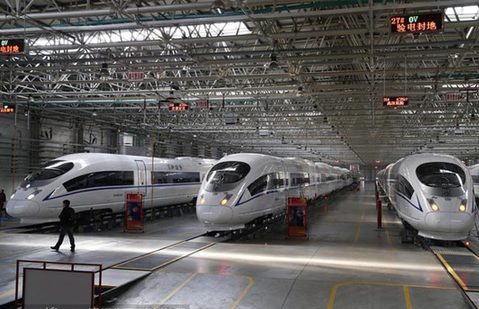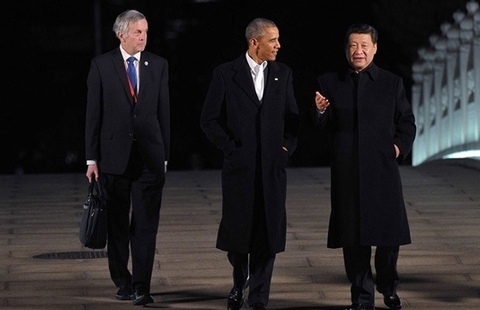
Qi Ji:
In addition, related organizational mechanisms and supportive policies have been improved. In 2011, the State Council issued a document on the construction and management of housing projects for low-income people, in 2013 it issued a document on speeding up the upgrading of the shanty housing program, and last year it issued a document on ensuring the upgrading is implemented. All these documents have optimized our policies by telling of the successful experiences of housing projects in various places and have helped ensure that goals will be achieved in a timely fashion. We have also gradually established and shaped an implementation mechanism with clear goals and working requirements, and set up a working mechanism in which provincial governments are in overall charge and municipal and county level governments are responsible for implementing plans.
Apart from these three documents, relevant departments of the State Council have also issued hundreds of regulations and documents. It is fair to say that since the large-scale housing projects for low-income residents were launched, China essentially has a supportive system of policies with features including input from government revenue, tax incentives, land guarantees and diversified financing sources.
CPC committees and governments at various levels attach great importance to this scheme, one that is important in improving people’s lives. They are also ensuring that the mechanisms for making it work are the best that they can possibly be, and have paid attention to implementation and increased support in land and finance, to ensure annual targets are met.
In the first four years of the 12th Five-Year Plan we renovated 1,580 units of shanty housing. We don’t have a detailed figure, but according to preliminary estimates, more than 40 million people have been able to move out of shanty houses to realize their long-held dream of living in buildings with relatively complete living facilities.
Qi Ji:
Certain problems in this large-scale housing scheme have arisen. For instance, utilities including water and electricity supply have lagged behind in some places, so some newly built houses did not immediately function as they should have. In some places, newly built houses in quite remote areas have proved to be inconvenient for people in terms of living and work. Some projects have even had high vacancy rates, and some people have complained about quality.
We have started building more than 32 million units over the past four years. If each project has 1,000 units, that means there are more than 30,000 projects. In so many projects it is indeed possible that some have had the kinds of problems I referred to earlier. In such cases we have asked relevant local governments to make improvements case by case in an effort to make the most of these precious housing resources.
This year marks the final year of the 12th Five-Year Plan. We will continue to accelerate housing projects for low-income families, with emphasis on upgrading shanty housing. The State Council has made it clear that work on building more than 7 million units will be begin, or preparations will be made to do so, this year. Most will be upgraded from shanty houses. Essentially, we also aim to finish building 4.8 million units this year.
On the question of renovating dilapidated houses in rural areas, a topic that may be of interest to some people, the nation has provided supportive policies and subsidies to renovate such houses inhabited by low-income families. Since the work began in 2008, about 16 million rural households have renovated their dilapidated houses, and we plan to renovate more than 3 million this year.
That concludes my introduction on the housing project for low-income families since the beginning of the 12th Five-Year Plan.
Hu Kaihong (host):
Now questions for the two ministers.
China Daily:
I have two questions for Minister Zhai. First, the action plan for preventing and eliminating air pollution has been implemented for more than a year, with various comments coming in from all walks of life. Can you comment on the progress of implementing the plan? Second, of the 10 provisions proposed by the action plan, there is a goal set for 2017. But in the past year, a certain number of cities have failed to reach the goal, and some media and specialists observed that it is unlikely that cities will reach the final goal, or at least find it very challenging, to reach it by 2017. What is your view?
Zhai Qing:
Thank you for the question. First, I would like to extend my appreciation to all of you for your care and support for the goal of preventing and eliminating air pollution. The 10 provisions of the action plan have been released for more than a year, and with the concerted efforts of various localities and the departments, progress has indeed been achieved. As an example, I would like to refer to the 74 cities that have been chosen for implementing the new air quality standards. I have statistics covering three categories prepared for your information.
First, the levels of PM 2.5 in the 74 cities have dropped in 2014, with an average reduction of 11.1 percent. The three key regions monitored have all registered a drop in numbers; 12.3 percent for the Beijing-Tianjin-Hebei region; 10.4 percent for the Yangtze River Delta region and 10.6 percent for the Pearl River Delta region.
Second, the number of air-quality-qualified days within the year for the 74 cities have clearly risen, with an average increase of 5.5 percent. The three key regions monitored have, on average, witnessed an increase of 5.3 percent.
Third, the number of seriously-polluted-days in the 74 cities has also dropped. The average number among the cities monitored dropped by 3 percent. Of the three key regions, the Beijing-Tianjin-Hebei region dropped by 18.7 percent and the Yangtze River Delta region dropped by 51.8 percent. Both substantial drops. The Pearl River Delta region has not witnessed any heavy pollution in its air quality.








